The specific conflict you mention is always unresolvable. There's simply no way for a merge tool to know which version should be kept.
Git is probably better than SVN at dealing with resolvable conflicts, though. Its primary merge strategy is recursive, which finds the common ancestor of two commits changing the same file and does a three-way merge. It also has some built-in capability for recording and reusing conflict resolutions (git-rerere) and a variety of other merge strategies for special cases.
Git's advantage in merging is that it's part of the history. A merge commit is a commit with two parents. Git's model of history (a directed acyclic graph) expects there to be commits like this. This means that further merges in the future work exactly how they should. Always. (Yes, there are sometimes conflicts, but they're real conflicts, not an inability to handle the merge.)
SVN, on the other hand, just tries to track where merges occurred, but its model is still inherently linear. The history still just has a single string of commits, with merge tracking information providing extra help. From what I've heard, SVN can't always handle more complex merge patterns correctly. (One example is a reflective merge - merging A into B then B into A.)
